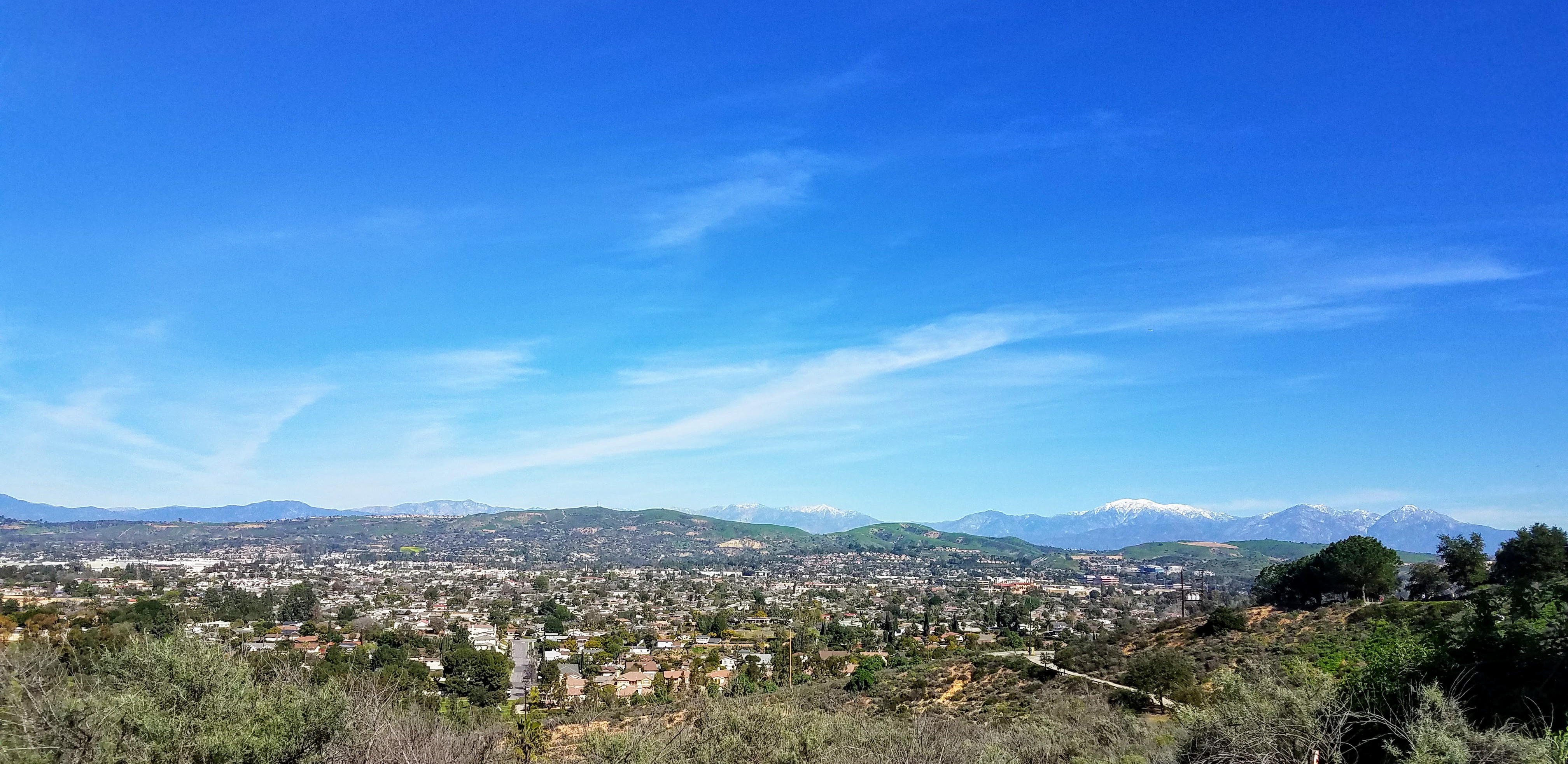
Back in the early 1990s, Dena Sommer, while on her way to and from work, would drive by “Prelude,” the art piece above that depicts two Native Americans building a fire. She was so intrigued by that particular piece that she set out to learn more about Brea’s Art in Public Places program. She went to the Brea Civic Center and picked up the original catalogue that had been published in black and white. Some time later, she acquired a newer catalogue, but this time it was published in color. Fast forward to 2008 when Dena and I, Terry Sullivan, first became a couple. She shared with me her excitement about the program. It didn’t take long for me to get onboard with what has evolved into a seemingly neverending quest (read full-blown obsession!) to find, photograph, and catalogue the entire collection.
The first phase of this process was to find each of the art pieces, which was a lot easier said than done. Both catalogues were rather outdated by 2008, plus they were never designed to display the entire collection in the first place. We quickly realized that we weren’t going to be able to find all the pieces without a considerable amount of assistance from the city’s Community Services Department staff. They were extremely helpful in getting us started. We never could have put it all together without them.
We soon discovered that there were any number of pieces that were originally in the collection that had either been stolen or permanently defaced, so the ones that for whatever reason weren’t replaced had to be taken off the list. We also discovered a number of pieces that hadn’t been listed in the city’s records so we had to add them to the list. It took us the better part of a year to determine which pieces actually belonged in the collection and which ones we had found that didn’t.
Right from day one Dena has taken all the photos and I’ve edited and organized them into photo albums and, thereafter, this website and PowerPoint presentations. We quickly learned that the only logical day and time to take the photos was on Sunday mornings. That, of course, is due to the relatively lower traffic levels at that time of the week. Our original photos were all too frequently either too bright or too dark, depending upon the direction they faced. In due time we learned that we needed to take photos in the morning of those pieces that face eastward and in the afternoon of those pieces that face westward. That approach made a big difference in the quality of the photos. Another major factor was the quality of photos taken by our ever evolving smartphone cameras. We then began to take note that during the spring and summer many of the pieces are surrounded by flowers, which, of course, have added a whole new level of beauty to the photos.
In the process of organizing the collection I created two spreadsheets. One lists the pieces by their location, starting on the western side of Brea and ending on the eastern side. The other spreadsheet lists the pieces alphabetically by artist so the reader can see the number of pieces each artist has created and the similarity of that particular artist’s style.
I also created a MapHub map that displays the location of each art piece in the collection. Each dot on the map represents an Art in Public Places piece. When a dot is clicked on or pressed, it will display a photo of the piece, its name, its artist, and its location. Gold dots represent companion pieces.
Despite having a population of approximately 43,000 people, the city of Brea, Californa, has one of the largest collections of public art of any city in the entire country. So far, the only city that our research has revealed as having more art pieces in its collection, not surprisingly, is Seattle, Washington.
Brea’s Art in Public Places program was founded in 1975. At that time any business choosing to develop a commercial property with an assessed valuation of $500,000 or more was required to sponsor an art piece on said property. In later years, due to inflation and Brea’s ever-increasing desirability as a place to do business, the assessed valuation was increased to $1.5 million. These businesses are required to fund their sponsored art pieces at a cost of at least 1% of the assessed valuation of the project.
